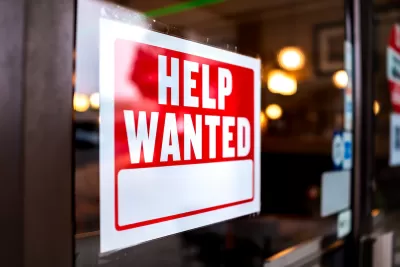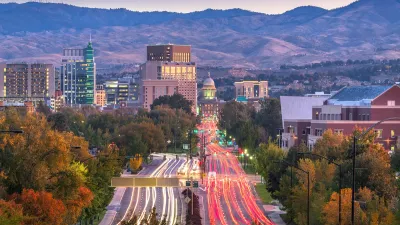For many people experiencing homelessness, the process of finding and keeping a job is fraught with challenges.

An article in the Urban Institute’s Urban Wire by Maureen Sarver explains why it’s often difficult for people experiencing homelessness to maintain employment that pays enough to cover the cost of housing.
According to Sarver, “A recent study found that 53 percent of adults sleeping in homeless shelters and 40 percent of people sleeping on the street or other places not intended for sleeping were employed during the same year they had experienced homelessness. Even when people are employed, their incomes still aren’t high enough to afford housing in short supply.”
The article points to systemic barriers that prevent people from getting and keeping employment, providing suggestions for how “homelessness response and workforce development systems should work together to target resources to help people find a stable job and stable housing.”
For many unhoused people, basic requirements for employment such as an ID, professional clothing, or mobility can be hard to come by, so programs that address these gaps can help people secure employment and housing. “Employment is not a magic bullet for solving homelessness, but homelessness is still a solvable problem that requires sustained commitment from local communities and the federal government. By making efforts that combine housing and employment supports, policymakers at all levels can better address their communities’ needs.”
FULL STORY: Why Is It So Hard for People Experiencing Homelessness to “Just Go Get a Job?”

Alabama: Trump Terminates Settlements for Black Communities Harmed By Raw Sewage
Trump deemed the landmark civil rights agreement “illegal DEI and environmental justice policy.”

Planetizen Federal Action Tracker
A weekly monitor of how Trump’s orders and actions are impacting planners and planning in America.

The 120 Year Old Tiny Home Villages That Sheltered San Francisco’s Earthquake Refugees
More than a century ago, San Francisco mobilized to house thousands of residents displaced by the 1906 earthquake. Could their strategy offer a model for the present?

In Both Crashes and Crime, Public Transportation is Far Safer than Driving
Contrary to popular assumptions, public transportation has far lower crash and crime rates than automobile travel. For safer communities, improve and encourage transit travel.

Report: Zoning Reforms Should Complement Nashville’s Ambitious Transit Plan
Without reform, restrictive zoning codes will limit the impact of the city’s planned transit expansion and could exclude some of the residents who depend on transit the most.

Judge Orders Release of Frozen IRA, IIJA Funding
The decision is a victory for environmental groups who charged that freezing funds for critical infrastructure and disaster response programs caused “real and irreparable harm” to communities.
Urban Design for Planners 1: Software Tools
This six-course series explores essential urban design concepts using open source software and equips planners with the tools they need to participate fully in the urban design process.
Planning for Universal Design
Learn the tools for implementing Universal Design in planning regulations.
Clanton & Associates, Inc.
Jessamine County Fiscal Court
Institute for Housing and Urban Development Studies (IHS)
City of Grandview
Harvard GSD Executive Education
Toledo-Lucas County Plan Commissions
Salt Lake City
NYU Wagner Graduate School of Public Service





























